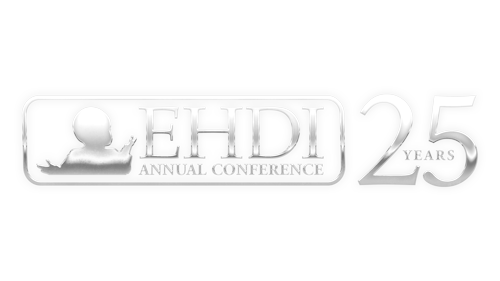2026 Early Hearing Detection & Intervention Conference
March 15-17, 2026 • Jacksonville, FL
3/12/2025 | 8:30 AM - 10:30 AM | Audiology Booth Basics: Understanding Hearing Assessments and Reading Audiograms | 301
Audiology Booth Basics: Understanding Hearing Assessments and Reading Audiograms
Numerous tests are used to screen and diagnose hearing loss in babies and children. These tests include both electrophysiologic measures (such as Otoacoustic Emissions, which do not require a child’s response) and behavioral measures (such as pure-tone audiometry, which rely on a child’s response). The selection of tests varies based on the part of the auditory system being assessed and factors such as the child’s developmental age or stage. Hearing diagnoses are typically informed by a combination of test results and case history information. Integrating data from these various tests is essential for accurately determining hearing status and informing appropriate intervention strategies.
In this instructional session, “Audiology Booth Basics: Understanding Hearing Assessments and Reading Audiograms," we will explore the different types of tests used in newborn screening and pediatric hearing evaluations. Participants will gain insight into the purpose and role of each test and how their results contribute to diagnosis. We will also review sample audiograms, providing an interactive opportunity for attendees to distinguish between types of hearing loss and understand the implications for auditory access.
A foundational understanding of audiology testing and the interpretation of audiometric results is crucial for parents, educators, speech-language pathologists (SLPs), therapists, and others working with children who are deaf or hard of hearing. This knowledge enhances their ability to understand a child’s hearing capabilities, the impact of hearing loss on speech and language development, and ultimately make more informed decisions about interventions and support.
- The participant will be able to identify three tests used to evaluate hearing in children and describe their purpose.
- The participant will be able to recognize the symbols on an audiogram and describe what they represent.
- The participant will be able to distinguish between audiograms that show conductive, sensorineural, and mixed hearing loss and describe the differences between these types of hearing loss.
Presentation:
3545975_18076AndreaDunn.pdf
Handouts:
Handout is not Available
Transcripts:
CART transcripts are NOT YET available, but will be posted shortly after the conference
Presenters/Authors
Andrea Dunn
(Primary Presenter,Co-Presenter,Author), Oberkotter Foundation, adunn@oberkotterfoundation.org;
Andrea is a pediatric audiologist and the Vice President of Programs at the Oberkotter Foundation.
ASHA DISCLOSURE:
Financial -
No relevant financial relationship exists.
Nonfinancial -
No relevant nonfinancial relationship exists.
AAA DISCLOSURE:
Financial -
Financial relationship with Oberkotter Foundation.
Nature: I am an employee of the Oberkotter Foundation. .
Nonfinancial -
No relevant nonfinancial relationship exists.
Jace Wolfe
(Co-Presenter,Author), Oberkotter Foundation, jwolfe@oberkotterfoundation.org;
Jace Wolfe, Ph.D., is the Senior Vice President of Innovation at the Oberkotter Foundation. He is author of the textbook entitled “Cochlear Implants: Audiologic Management and Considerations for Implantable Hearing Devices,” and he is co-editor (with Carol Flexer, Jane Madell, and Erin Schafer) of the textbooks “Pediatric Audiology: Diagnosis, Technology, and Management, Third Edition” and “Pediatric Audiology Casebook, Second Edition.” He is also a co-author of the textbook entitled “Programming Cochlear Implants, Third Edition,” and he has published over 130 book chapters and articles in peer-reviewed and trade journals. His areas of interests are pediatric hearing healthcare and overcoming barriers that prevent children with hearing loss from reaching their full potential.
ASHA DISCLOSURE:
Financial -
No relevant financial relationship exists.
Nonfinancial -
No relevant nonfinancial relationship exists.
AAA DISCLOSURE:
Financial -
No relevant financial relationship exists.
Nonfinancial -
No relevant nonfinancial relationship exists.
